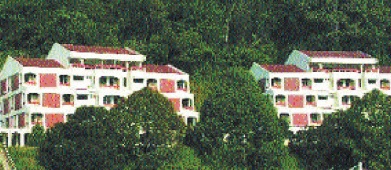Oct 2017
College General — a legacy of the MEP
College General was instituted by the MEP as a Centre of formation for Asian priests. The first College was a major seminary and a minor one at the same time, and this has been the status of College General until the year 1921, when it was made a fully “Major Seminary.” Humanities and Latin were taught in the early years and emphasis was placed on imparting knowledge on philosophy and theology, so much so that the older seminarians became well versed in these church sciences. In 1685, the French king sent an embassy to the King of Siam. Some of the members wanted to test the standard of the College; theological discussions were organised with a couple of seminarians, and they passed the test so well that they were invited to go to Europe and hold the same thesis before the King of France and the Holy Father in Rome.
In the first hundred years in Ayuthia, the College General saw its enrolment fluctuate between twenty and fifty students. Wars (in Siam) and persecutions (in Vietnam) were the main cause of a slow increase in the number of seminarians (1665-1762).
This forced the College to move to Chantaburi (Thailand) for a few months and, later, to Hondat (Cambodia). The political instability of that period resulted in the seminarians living in poverty and although a new building was built, it was razed to the ground by rebels. The deteriorating political situation and constant persecutions forced the search for a more tranquil location for the seminary.
India was chosen and in 1770, two professors and 41 seminarians arrived at Pondicherry, India by sea. The Seminary was established at Virampatnam.
Despite its peaceful calm, Pondicherry proved unsuitable as it was too far from China and Indo-China where most of the seminarians came from. As a result, the seminary was temporarily closed in 1782 until a more suitable place could be found.
Mandated by the MEP of Paris, representatives of Propaganda and missionaries, it was decided to revive the College General in Penang in 1808.
The new College in Penang had a small enrolment and the new students were mostly from China, due to the persecution in Sichuan at that time; so much so that the name of “College of Chinese” was given. The first Rector, Fr Michael Lolivier, who was in charge for 25 years, saw to it that his College would remain the “General” College, that is, opened to all Missions and at all times, either in time of war or persecutions. His wish was fulfilled, for students were coming, besides from China, from Vietnam (North and South), Burma, Japan, Korea and Malaya so that the year 1847 saw peak enrolment of 154 students, including junior and senior boys.
LOCAL COLLEGE
Since the College was instituted to train and form a local clergy for a local Church, it was logical that, sooner or later, the College which until recently had been MEP, would be taken over by the local priests and bishops. The last MEP Rector of the College in Penang was Fr J. M. Bosc, Mep (1966-1971).
The Malaysian Church had already been officially entrusted by Rome to the leadership of two local bishops in 1955, just two years before the country obtained its independence.
The first local priest, after his training in Rome, to join the MEP staff in Penang was Fr Gregory Yong in 1965.
In 1969, there were still seven MEP on the staff of the College, with only three local priests for 96 students, 53 Malaysian and 39 Thai. The first local Rector was Fr Achilles Choong. He was succeeded by Fr Anthony Soter Fernandez and Fr Murphy Pakiam, who both became bishops.
Source : History of the Church and Churches in Malaysia and Singapore (1511-2000) B Fr Paul Decroix MEP
Article reproduced from Herald Malaysia online


